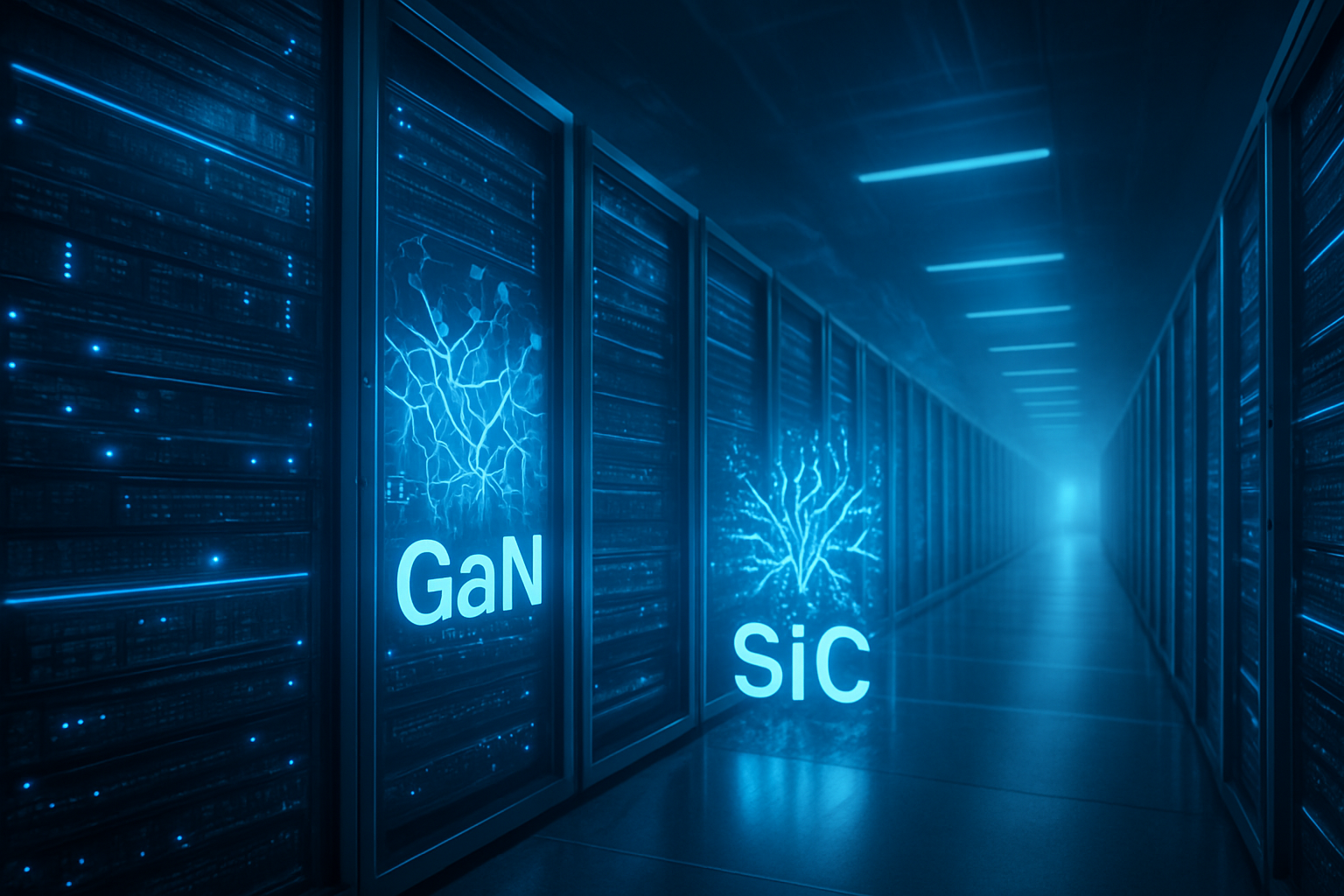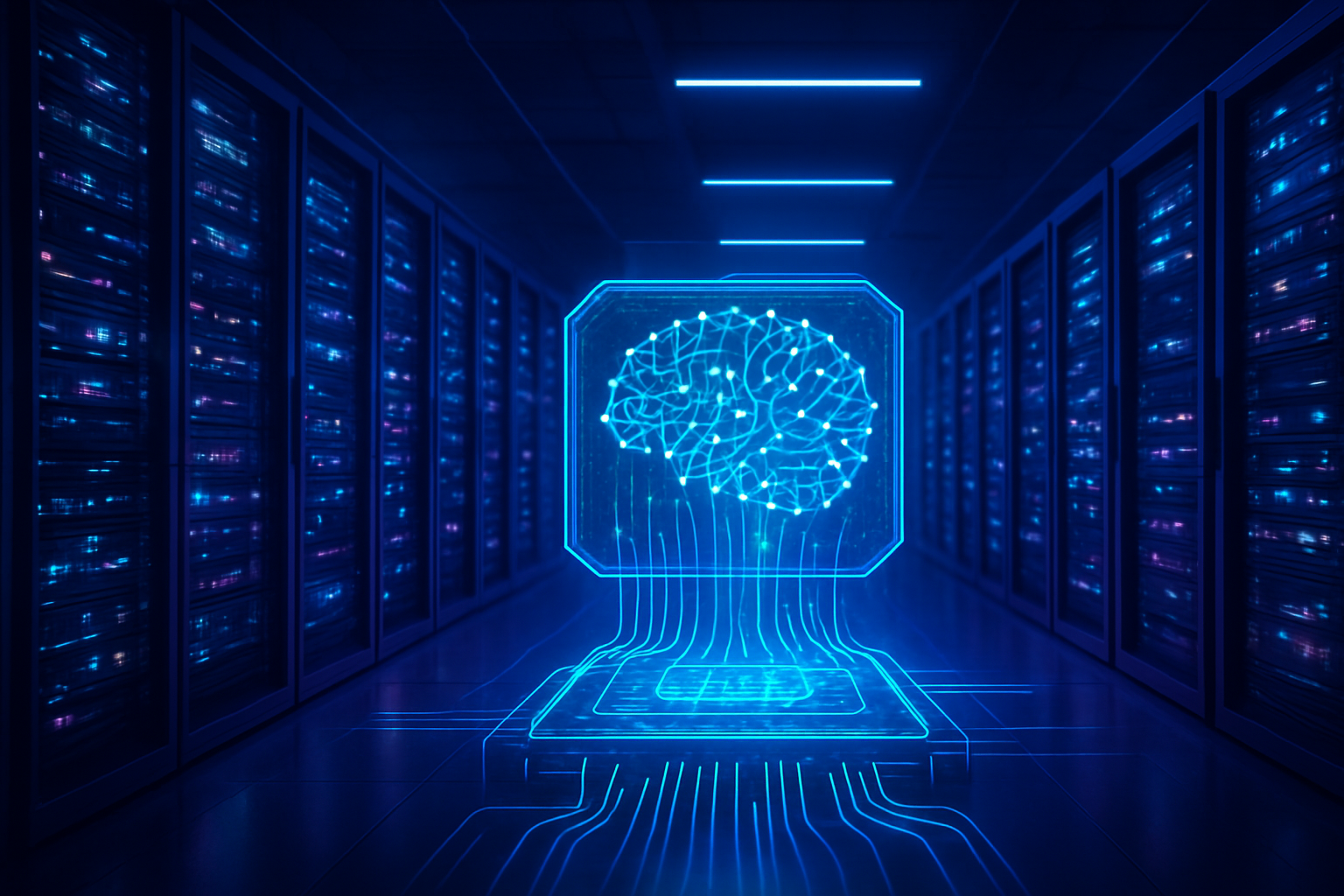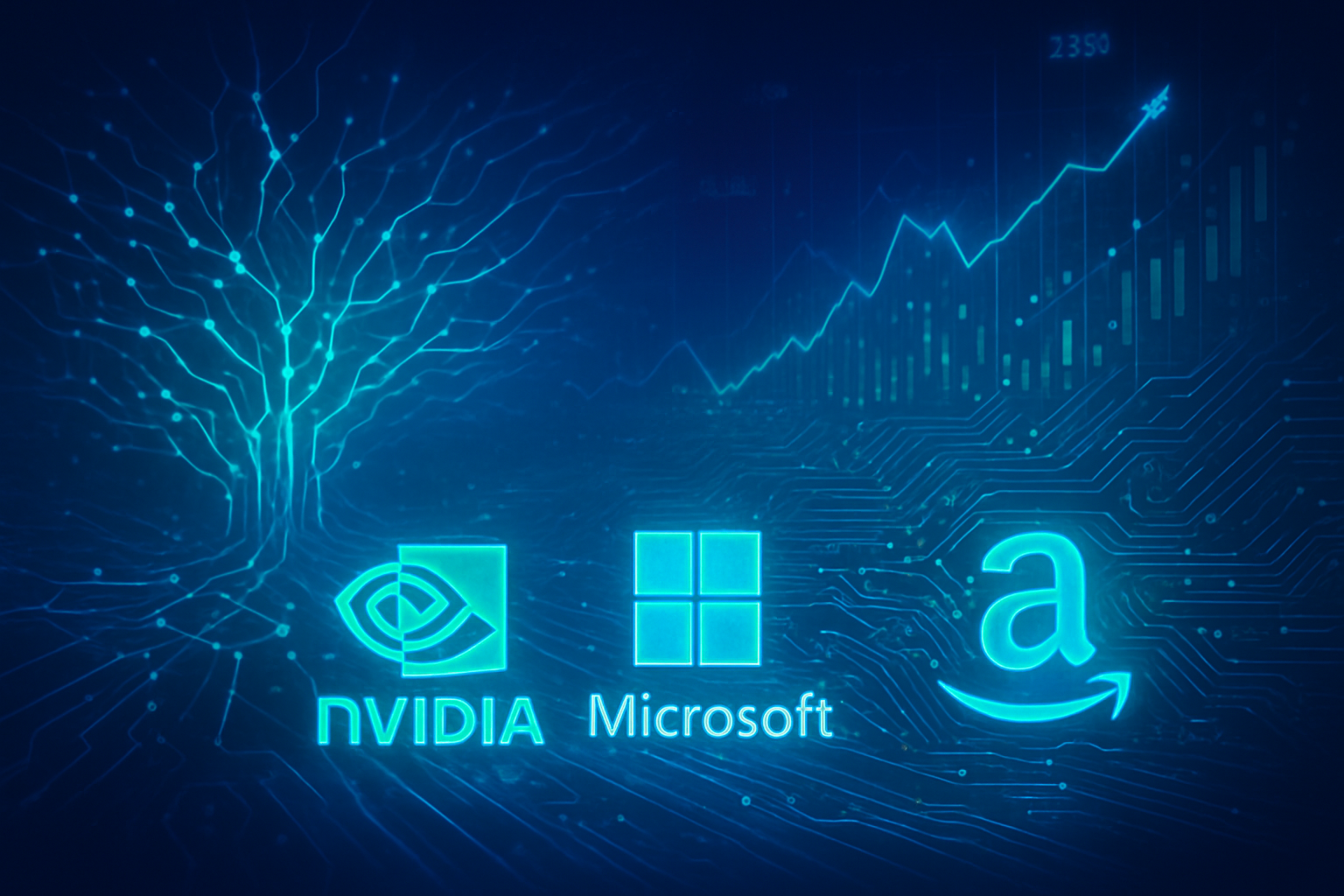ASML Holding NV (NASDAQ: ASML), the Dutch technology giant and undisputed monarch of advanced lithography, finds itself at the epicenter of the artificial intelligence (AI) revolution as November 2025 unfolds. As the sole provider of Extreme Ultraviolet (EUV) lithography systems—the indispensable tools for crafting the world's most sophisticated microchips—ASML is charting a course through an investment landscape marked by both overwhelming optimism from analyst titans and cautious undercurrents driven by geopolitical complexities and valuation concerns. The contrasting expert opinions highlight the intricate balance between ASML's unparalleled technological moat and the volatile external forces shaping the semiconductor industry's future.
The immediate significance of these diverse views is profound. For investors, it underscores the strategic importance of ASML as a foundational enabler of AI, offering robust long-term growth prospects. However, it also signals potential short-term volatility, urging a nuanced approach to an asset widely considered a linchpin of global technology. The company's recent strong performance, particularly in Q3 2025 bookings, and a series of analyst upgrades reaffirm confidence, yet the shadow of export controls and market cyclicality keeps a segment of the analytical community on a more tempered "Hold" stance.
The Battle of Titans: Unpacking ASML's Diverse Analyst Landscape
The analytical community largely converges on a "Moderate Buy" consensus for ASML Holding NV, a testament to its critical and near-monopolistic position in the semiconductor equipment market. Out of 27 Wall Street analysts, 21 recommend "Buy" or "Strong Buy," with only 6 suggesting a "Hold" rating, and no "Sell" recommendations. However, a closer look reveals a fascinating divergence in price targets and underlying rationales, showcasing a true "battle of titans" among financial experts.
Bullish Stances: The Indispensable Enabler of AI
The most prominent bullish arguments center on ASML's unparalleled technological leadership and its pivotal role in the AI-driven future. Firms like Rothschild Redburn, a notable "analyst titan," upgraded ASML from "Neutral" to "Buy" on November 7, 2025, dramatically raising its price target to €1200 from €900. This bullish shift is explicitly tied to a highly positive outlook on High Numerical Aperture (High-NA) EUV lithography, citing significant improvements in field stitching and the accelerating adoption of chiplets for AI compute applications. Rothschild Redburn's analyst, Timm Schulze-Melander, forecasts lithography intensity to climb to 23% of wafer fabrication equipment (WFE) capital expenditure by 2030, driven by advanced transistor architectures like gate-all-around (GAA), directly benefiting ASML.
Other major players echoing this sentiment include JPMorgan (NYSE: JPM), which lifted its price target to $1,175 from $957 in October 2025, maintaining an "overweight" rating. Citi (NYSE: C) also holds a "Buy" rating, anticipating ASML's 2025 revenue to land between €35-40 billion, bolstered by the late ramp-up of Taiwan Semiconductor Manufacturing Company's (NYSE: TSM) N2 technology and heightened demand for High Bandwidth Memory (HBM). These analysts emphasize ASML's near-monopoly in EUV, its strong order book (with Q3 2025 bookings exceeding expectations at €5.4 billion), robust financial performance, and the insatiable, long-term demand for advanced chips across AI, 5G, and other high-tech sectors. ASML's own forecast for approximately 15% net sales growth in 2025 further fuels this optimism.
Bearish/Neutral Stances: Valuation, Geopolitics, and Cyclical Headwinds
While fewer in number, the more cautious voices highlight valid concerns. Bernstein SocGen Group, for instance, reiterated a "Market Perform" (equivalent to Hold) rating with a $935 price target in November 2025. This stance often reflects a belief that the stock is fairly valued at current levels, or that immediate catalysts for significant outperformance are lacking.
A primary concern for neutral analysts revolves around ASML's valuation. With a P/E ratio often above 30x (and reaching 37x in November 2025), some argue the stock is expensive, especially after recent rallies. Millennial Dividends, through Seeking Alpha, downgraded ASML to "Hold" in November 2025, citing this elevated valuation and geopolitical risks, arguing that the risk/reward profile is no longer attractive despite strong fundamentals.
Another significant point of contention is the semiconductor industry's inherent cyclicality and geopolitical headwinds. ASML itself lowered its 2025 revenue forecast in late 2024 from €30-40 billion to €30-35 billion, attributing it to a slower-than-expected recovery in non-AI chip markets and delayed investments. Geopolitical tensions, particularly US-China trade restrictions, are a tangible headwind. ASML expects its China revenue to normalize to 20-25% by 2026, down from nearly 50% in early 2024, due to tightened U.S. export controls. These factors, alongside potential customer overcapacity and delayed orders, temper the enthusiasm for some analysts, who prioritize the near-term operational challenges over the long-term technological dominance.
The contrasting views thus hinge on whether analysts emphasize ASML's undeniable technological moat and the structural growth of AI demand versus the short-term impact of market cyclicality, geopolitical uncertainties, and a premium valuation.
ASML's Ripple Effect: Shaping the AI Ecosystem
ASML's (NASDAQ: ASML) market position is not merely strong; it is foundational, making it an an indispensable arbiter of progress for the entire AI ecosystem. Its near-monopoly on EUV lithography means that virtually every cutting-edge AI chip, from the most powerful GPUs to custom ASICs, relies on ASML's technology for its very existence. This unique leverage profoundly impacts AI companies, tech giants, and nascent startups.
Beneficiaries: The Titans of AI and Cloud
The primary beneficiaries of ASML's advancements are the tech giants and major AI companies at the forefront of AI development. Chip manufacturers such as Taiwan Semiconductor Manufacturing Company (TSMC) (NYSE: TSM), Samsung (KRX: 005930), and Intel (NASDAQ: INTC) are critically dependent on ASML's EUV and High-NA EUV machines to fabricate their most advanced logic and memory chips. Without access to these systems, they simply cannot produce the sub-5nm and future sub-2nm nodes essential for modern AI.
Consequently, AI chip designers like NVIDIA (NASDAQ: NVDA), Advanced Micro Devices (NASDAQ: AMD), and the hyperscale cloud providers—Amazon (NASDAQ: AMZN) (AWS), Google (NASDAQ: GOOGL), and Microsoft (NASDAQ: MSFT)—which design and deploy custom AI accelerators, directly benefit. ASML's technology enables these companies to continuously push the boundaries of AI performance, efficiency, and scale, allowing them to train larger models, process more data, and deliver more sophisticated AI services. This competitive edge translates into market leadership and strategic advantages in the global AI race.
Challenges: Startups and Geopolitically Constrained Players
While indirectly benefiting from the overall advancement of AI hardware, smaller AI startups face higher barriers to entry. The immense costs and complexities associated with accessing leading-edge semiconductor fabrication, intrinsically linked to ASML's technology, mean that only well-funded entities can operate at the forefront.
The most significant challenges are reserved for chipmakers and AI companies in regions targeted by export controls, particularly China. U.S. restrictions, enforced through the Dutch government, prohibit the sale of ASML's most advanced EUV (and increasingly some DUV) systems to Mainland China. This severely curtails the ability of Chinese firms, such as Huawei (SHE: 002502), to produce leading-edge AI chips domestically. This forces them to invest heavily in developing nascent, less advanced domestic alternatives (e.g., 28nm process technology from SiCarrier) or to rely on older nodes, creating a significant technological gap. This geopolitical fragmentation risks bifurcating the global AI ecosystem, with differing levels of hardware capability.
Competitive Implications and Potential Disruptions
ASML's near-monopoly creates a unique competitive dynamic. Major foundries must aggressively secure access to ASML's latest machines to maintain their technological edge. The limited supply and exorbitant cost of EUV systems mean that access itself becomes a competitive differentiator. This dynamic reinforces the strategic advantage of nations and companies with strong ties to ASML.
While ASML's EUV technology is virtually irreplaceable for advanced logic chips, nascent alternatives are emerging. Canon's (NYSE: CAJ) Nanoimprint Lithography (NIL) is reportedly capable of 5nm and potentially 2nm patterning, using significantly less power than EUV. However, its slower speed and suitability for memory rather than complex processors limit its immediate threat. Chinese domestic efforts, such as those by SiCarrier and Prinano, are also underway, but experts widely agree they are years away from matching ASML's EUV capabilities for advanced logic. These alternatives, if successful in the long term, could offer cheaper options and reduce reliance on ASML in specific segments, but they are not expected to disrupt ASML's dominance in leading-edge AI chip manufacturing in the near to medium term.
As of November 2025, ASML's market positioning remains exceptionally strong, buttressed by its next-generation High-NA EUV systems (EXE:5000 and EXE:5200) shipping to customers like Intel, poised to enable sub-2nm nodes. This technological lead, combined with a robust order backlog (€38 billion as of Q1 2025) and strategic investments (such as a $1.5 billion investment in AI startup Mistral AI in September 2025), cements ASML's indispensable role in the ongoing AI hardware race.
The Wider Significance: ASML as the AI Era's Keystone
ASML Holding NV's (NASDAQ: ASML) role transcends mere equipment supply; it is the keystone of the modern semiconductor industry and, by extension, the entire AI landscape. As of November 2025, its unique technological dominance not only drives innovation but also shapes geopolitical strategies, highlights critical supply chain vulnerabilities, and sets the pace for future technological breakthroughs.
Fitting into the Broader AI Landscape and Trends
ASML's EUV lithography is the fundamental enabler of "more compute for less energy"—the mantra of the AI era. Without its ability to etch increasingly smaller and more complex patterns onto silicon wafers, the relentless pursuit of AI advancements, from generative models to autonomous systems, would grind to a halt. ASML's technology allows for higher transistor densities, greater processing power, and improved energy efficiency, all critical for training and deploying sophisticated AI algorithms. The company itself integrates AI and machine learning into its EUV systems for process optimization, demonstrating a symbiotic relationship with the very technology it enables. Its strategic investment in Mistral AI further underscores its commitment to exploring the full potential of AI across its operations and products.
The demand for ASML's EUV systems is projected to grow by 30% in 2025, directly fueled by the insatiable appetite for AI chips, which are expected to contribute over $150 billion to semiconductor revenue in 2025 alone. This positions ASML not just as a supplier but as the foundational infrastructure provider for the global AI build-out.
Geopolitical Echoes and Potential Concerns
ASML's strategic importance has unfortunately thrust it into the heart of geopolitical tensions, particularly the escalating US-China tech rivalry. The Dutch government, under immense pressure from the United States, has imposed stringent export restrictions, banning ASML's most advanced EUV machines and, since January 2025, certain DUV systems from being sold to Mainland China. These controls aim to curb China's access to leading-edge chip technology, thereby limiting its AI and military capabilities.
This has led to several critical concerns:
- Supply Chain Concentration: ASML's near-monopoly creates a single point of failure for the global semiconductor industry. Any disruption to ASML, whether from natural disasters or geopolitical events, would have catastrophic ripple effects across the global economy.
- Export Control Impact: While these controls align with US strategic interests, they cause significant revenue volatility for ASML (projecting a "significant decline" in China sales for 2026) and strain international relations. There's a risk of further tightening, potentially impacting ASML's DUV business, which could accelerate China's push for technological self-sufficiency, ironically undermining long-term US leadership. ASML is actively diversifying its supply chain to reduce reliance on US components.
- Tariffs: The looming threat of US tariffs on EU goods, potentially including semiconductor manufacturing tools, could increase costs for chipmakers, potentially slowing down critical fab expansion needed for AI.
Comparisons to AI Milestones
ASML's role is akin to historical breakthroughs that fundamentally reshaped computing:
- The Transistor (1947): Enabled miniaturization. ASML's EUV pushes this to atomic scales, making modern AI chips possible.
- The Integrated Circuit (late 1950s): Allowed multiple components on a single chip, driving Moore's Law. ASML's EUV is the technology sustaining Moore's Law into the sub-nanometer era, directly enabling the dense circuits vital for AI.
- The GPU (late 1990s): Revolutionized parallel processing for AI. ASML's machines are essential for manufacturing these very GPUs, allowing them to achieve the performance required for today's large language models and complex AI workloads.
In essence, ASML is not just contributing to AI; it is providing the indispensable manufacturing infrastructure that makes the current AI revolution physically possible. Without its continuous innovation, the rapid advancements in AI we witness today would be severely constrained.
The Horizon: ASML's Future in a Hyper-Connected AI World
Looking ahead, ASML Holding NV (NASDAQ: ASML) is poised to continue its pivotal role in shaping the future of technology, driven by an ambitious roadmap for lithography innovation and an ever-expanding array of AI-powered applications. However, this trajectory is also fraught with technological and geopolitical challenges that will define its path.
Expected Near-Term and Long-Term Developments
ASML's technological leadership is set to be further cemented by its next-generation High-NA EUV systems. The EXE platform, with its 0.55 numerical aperture, is on track to enable high-volume manufacturing of sub-2nm logic nodes and leading-edge DRAM in 2025-2026. Early feedback from customers like Intel (NASDAQ: INTC) and Samsung (KRX: 005930) has been promising, with significant progress in wafer processing and cycle time reduction. Taiwan Semiconductor Manufacturing Company (TSMC) (NYSE: TSM) is also expected to formalize its High-NA roadmap by April 2026, signaling broader industry adoption. Beyond High-NA, ASML is already researching "Hyper-NA" EUV technology for the early 2030s, aiming for a 0.75 numerical aperture to push transistor densities even further.
Beyond traditional chip scaling, ASML is diversifying into advanced packaging solutions, shipping its first Advanced Packaging product, the TWINSCAN XT:260 i-line scanner, in Q3 2025. This move acknowledges that future performance gains will increasingly come from innovative chip integration as much as from raw transistor density.
Potential Applications and Use Cases
The demand for ASML's advanced lithography equipment will continue to be fueled by a wide array of emerging technologies:
- Artificial Intelligence: This remains the primary catalyst, driving the need for increasingly powerful and efficient chips in AI accelerators, data centers, and edge AI devices. ASML anticipates 2025 and 2026 to be strong growth years propelled by AI investments.
- Automotive: The shift to electric vehicles (EVs), advanced driver-assistance systems (ADAS), and autonomous driving will require vast quantities of sophisticated semiconductors.
- Internet of Things (IoT) and Industrial Automation: The proliferation of connected devices and smart factories will create continuous demand for specialized chips.
- Healthcare: Advanced chips will enable innovations like "lab-on-a-chip" solutions for rapid diagnostics.
- 5G/6G Communications and Renewable Energy: These sectors demand high-performance components for faster connectivity and efficient energy management.
- Quantum Computing and Robotics: While still in nascent stages, these fields represent long-term drivers for ASML's cutting-edge technology, including humanoid robotics.
Challenges That Need to Be Addressed
Despite its strong position, ASML faces significant headwinds:
- Geopolitical Tensions: US-China trade disputes and export controls remain a major concern. ASML anticipates a "significant decline" in its China sales for 2026 due to these restrictions, which now extend to certain DUV systems and critical maintenance services. ASML is actively working to diversify its supply chain away from US-centric components to mitigate these risks. The prospect of new US tariffs on EU goods could also raise costs.
- Technological Hurdles: Pushing the limits of lithography comes with inherent challenges. The immense power consumption and cost of AI computing necessitate solutions for "more compute for less energy." The commercialization of Hyper-NA EUV faces obstacles like light polarization effects and the need for new resist materials. Furthermore, continued miniaturization may require transitioning to novel channel materials with superior electron mobility, demanding new deposition and etch capabilities.
- "AI Nationalism": Export controls could lead to a bifurcation of the global semiconductor ecosystem, with different regions developing independent, potentially incompatible, technological paths.
Expert Predictions
Experts and ASML's own forecasts paint a picture of sustained, albeit sometimes volatile, growth. ASML projects approximately 15% net sales growth for 2025, with strong gross margins. While the outlook for 2026 is tempered by "increasing uncertainty" due to macroeconomic and geopolitical developments, ASML does not expect total net sales to fall below 2025 levels. Long-term, ASML maintains a robust outlook, projecting annual sales between €44 billion and €60 billion by 2030, driven by global wafer demand and increasing EUV adoption outside China. AI is consistently identified as the primary growth engine for the semiconductor industry, expected to exceed $1 trillion by 2030. However, analysts also anticipate a continued reshaping of the global semiconductor landscape, with China's push for self-sufficiency posing a long-term challenge to ASML's market dominance if rapid innovation is not maintained by other nations.
The Unstoppable Engine: ASML's Enduring Impact on AI
As November 2025 draws to a close, ASML Holding NV (NASDAQ: ASML) stands as an irrefutable testament to technological ingenuity and strategic indispensability in the global economy. Its near-monopoly on advanced lithography equipment, particularly EUV, solidifies its role not just as a participant but as the fundamental enabler of the artificial intelligence revolution. The contrasting opinions of financial analysts—ranging from fervent bullishness driven by AI's insatiable demand to cautious "Holds" due to valuation and geopolitical headwinds—underscore the complex yet compelling narrative surrounding this Dutch powerhouse.
Summary of Key Takeaways:
- Technological Dominance: ASML's EUV and forthcoming High-NA EUV systems are irreplaceable for producing the most advanced chips, directly sustaining Moore's Law and enabling next-generation AI.
- AI as a Growth Catalyst: The burgeoning demand for AI chips is the primary driver for ASML's robust order book and projected revenue growth, with EUV sales expected to surge by 30% in 2025.
- Geopolitical Crossroads: ASML is caught in the crosshairs of US-China tech rivalry, facing export controls that will significantly impact its China sales from 2026 onwards, leading to supply chain diversification efforts.
- Strong Financials, Premium Valuation: The company exhibits strong financial performance and a healthy outlook, but its premium valuation remains a point of contention for some analysts.
- Long-Term Resilience: Despite short-term volatilities, ASML's foundational role and continuous innovation pipeline ensure its long-term strategic importance.
Assessment of Significance in AI History:
ASML's significance in AI history cannot be overstated. It is the manufacturing linchpin that transforms abstract AI algorithms into tangible, high-performance computing power. Without ASML's ability to etch billions of transistors onto a silicon wafer at sub-nanometer scales, the current era of generative AI, large language models, and advanced machine learning would simply not exist. It represents the physical infrastructure upon which the entire digital AI economy is being built, making it as critical to AI's advancement as the invention of the transistor or the integrated circuit.
Final Thoughts on Long-Term Impact:
The long-term impact of ASML will be defined by its continued ability to push the boundaries of lithography, enabling the semiconductor industry to meet the ever-increasing demands of AI, quantum computing, and other emerging technologies. Its strategic investments in AI startups like Mistral AI indicate a proactive approach to integrating AI into its own operations and expanding its influence across the tech ecosystem. While geopolitical pressures and the cyclical nature of the semiconductor market will introduce periodic challenges, ASML's unchallenged technological moat, coupled with the structural demand for advanced computing, positions it as an essential, long-term investment for those betting on the relentless march of technological progress.
What to Watch For in the Coming Weeks and Months:
- Q4 2025 Earnings and Full-Year Guidance: Investors will keenly await ASML's Q4 results and its confirmed full-year 2025 performance against its strong guidance.
- 2026 Outlook: The detailed 2026 outlook, expected in January 2026, will be crucial for understanding the anticipated impact of reduced China sales and broader market conditions.
- High-NA EUV Adoption: Updates on the qualification and adoption timelines for High-NA EUV by key customers, especially TSMC's formal roadmap in April 2026, will signal future growth.
- Geopolitical Developments: Any new shifts in US-China trade policy, export controls, or potential tariffs will significantly influence ASML's operational environment.
- Share Buyback Program: The announcement of a new share buyback program in January 2026 will indicate ASML's capital allocation strategy.
- Customer Capex Plans: Monitoring the capital expenditure plans of major chip manufacturers will provide insights into future order volumes for ASML's equipment.
This content is intended for informational purposes only and represents analysis of current AI developments.
TokenRing AI delivers enterprise-grade solutions for multi-agent AI workflow orchestration, AI-powered development tools, and seamless remote collaboration platforms.
For more information, visit https://www.tokenring.ai/.









